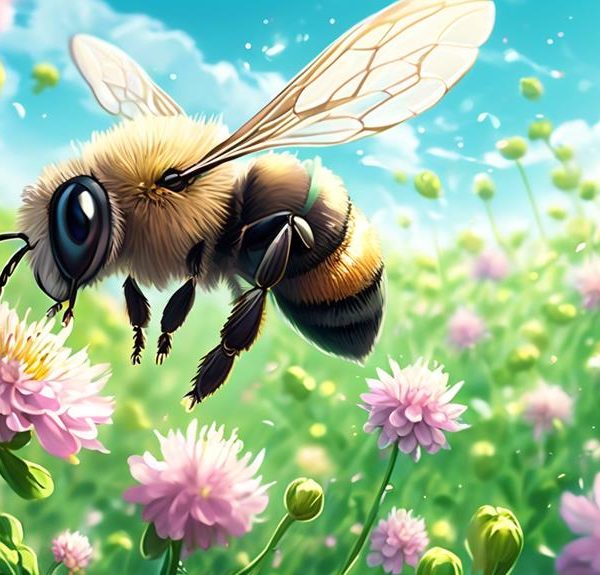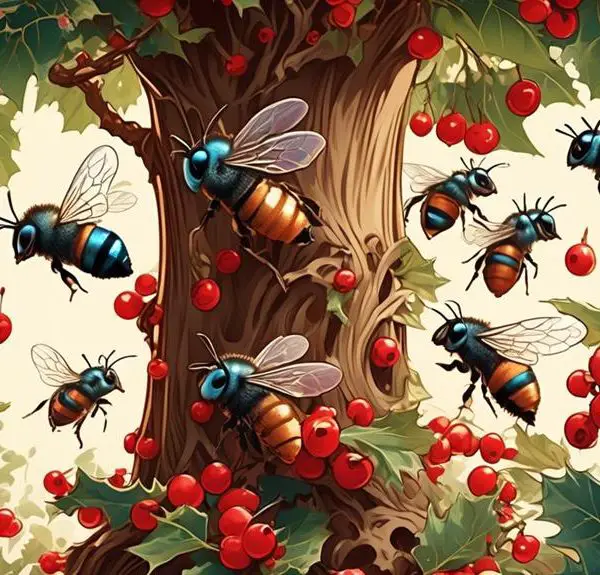Keeping geraniums in your garden? Discover if Mason Bees, nature's super pollinators, have a soft spot for these vibrant blooms.
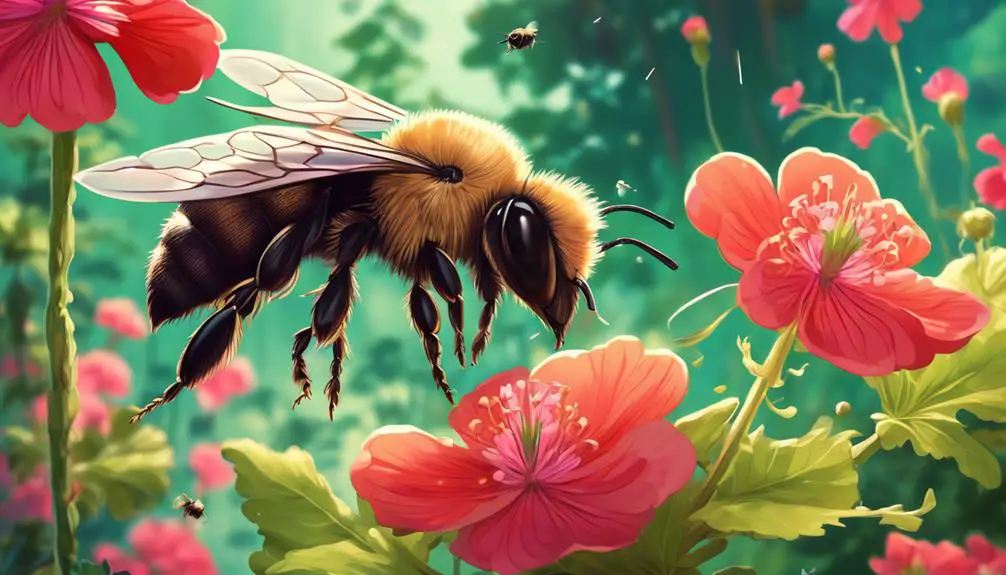
Do Mason Bees Like Geraniums?
Did you know that Mason Bees, which make up less than 1% of known bee species, are exceptional pollinators, outperforming their honeybee counterparts by leaps and bounds?
You're probably wondering, 'What's the connection between these industrious insects and the popular garden staple, geraniums?'
It's common knowledge that bees have specific preferences when it comes to the flowers they frequent. Some are even particular down to the color and shape of the blossoms.
But do geraniums make the cut for Mason Bees? Let's explore this intriguing intersection between insect and plant, and see if your garden could be the next hotspot for these beneficial bugs.
Key Takeaways
- Mason Bees are exceptional pollinators and are attracted to the nectar-rich blossoms of geraniums.
- Geraniums provide necessary nourishment to Mason Bees and attract them to the garden.
- Mason Bees facilitate cross-pollination of geraniums by transferring pollen.
- Planting geraniums and creating an inviting environment can attract Mason Bees to your garden.
Understanding Mason Bees

You'd be intrigued to know that Mason Bees, scientifically known as Osmia, are solitary insects that play a pivotal role in pollination, often outperforming their more famous cousins, the honeybees. Unlike honeybees that live in complex, social colonies, Mason Bees are independent, each female making her own nest without the help of worker bees. This solitary lifestyle has a significant impact on their pollination efficiency.
You're probably wondering why they're called 'Mason' Bees. Well, it's because of their unique nesting habits. They use mud to build and seal their nests, much like a mason would. These nests are usually found in naturally occurring gaps like hollow stems or woodpecker drillings.
Importantly, Mason Bees aren't aggressive. They don't have a hive or queen to protect, so they're less likely to sting unless seriously provoked. That's a major plus if you're considering them for your garden.
Geraniums: An Overview
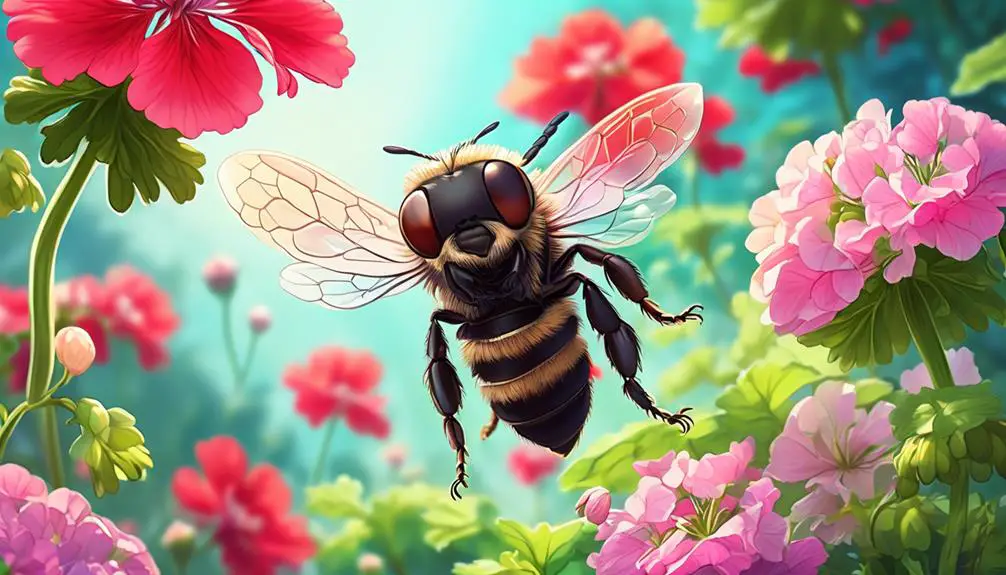
Now, let's delve into the world of Geraniums, a group of flowering plants known for their vibrant colors and versatility in various garden settings. Originating from South Africa, Geraniums have spread worldwide, adorning gardens with hues of red, pink, purple, and white. They're noted for their aesthetic appeal and relative ease of care, making them popular among novice and seasoned gardeners alike.
Geraniums belong to the Geraniaceae family, with over 422 species to its name. They're perennials, enduring through several growing seasons, and are known for their rounded, often palmately lobed or divided leaves. Their distinct five-petaled flowers bloom from spring until fall, offering an extended period of visual delight.
A key aspect of their adaptability lies in their tolerance for various soil types and conditions. They'll thrive in well-drained soil, partial shade to full sun exposure. However, they're not overly fond of extreme heat. You'll find them as container plants, in flower beds, or hanging baskets, providing ample opportunities for garden design creativity.
Understanding Geraniums' characteristics and preferences is crucial when pairing them with specific pollinators. Thus, the next question arises: Do Mason Bees like Geraniums? Stay tuned.
Mason Bees' Floral Preferences
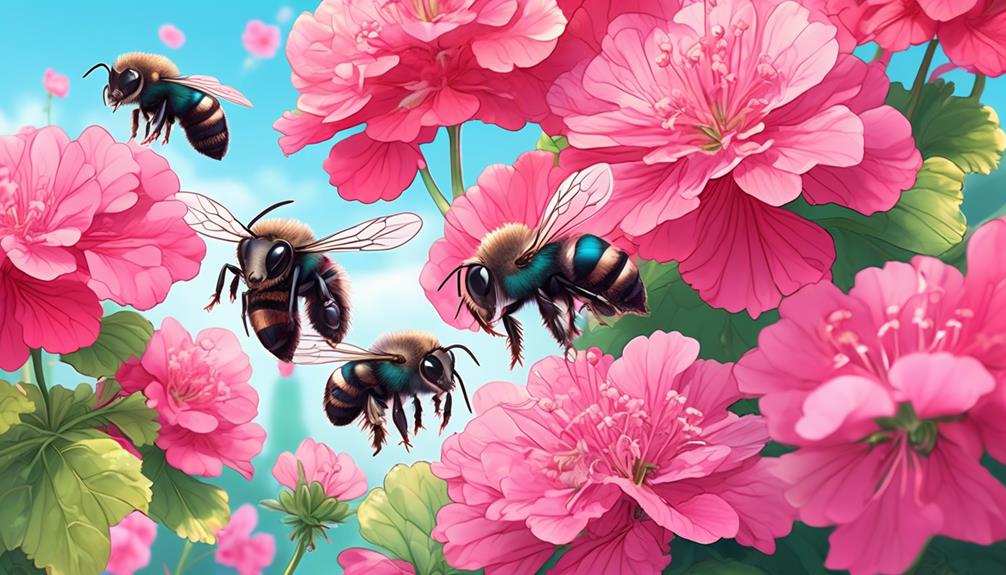
Having explored the captivating world of Geraniums, it's essential to consider their potential role in attracting certain pollinators, specifically, Mason Bees. You may be surprised to learn that these industrious insects have specific floral preferences that can greatly influence their pollination patterns.
Mason Bees, like other pollinators, are drawn to certain plants over others. Their choices are typically influenced by the plant's color, fragrance, and the type of nectar it produces. Let's take a closer look at these preferences:
Plant Trait | Mason Bee Preference | Impact on Pollination |
|---|---|---|
Color | Blue and Purple | Higher attraction, increased pollination |
Fragrance | Light, Sweet | Moderate attraction, influences bee's direction |
Nectar | High sugar content | High attraction, ensures bee's return |
From this table, it's clear that Mason Bees would likely be attracted to Geraniums. These flowers typically exhibit vibrant colors, have a light, appealing fragrance, and produce sweet nectar. However, the specific variety of Geranium plays a role as well.
While this doesn't confirm that Mason Bees prefer Geraniums above all else, it does suggest a strong likelihood. To determine this, more detailed studies observing Mason Bees' interactions with Geraniums would be required.
Geraniums and Mason Bees: A Relationship
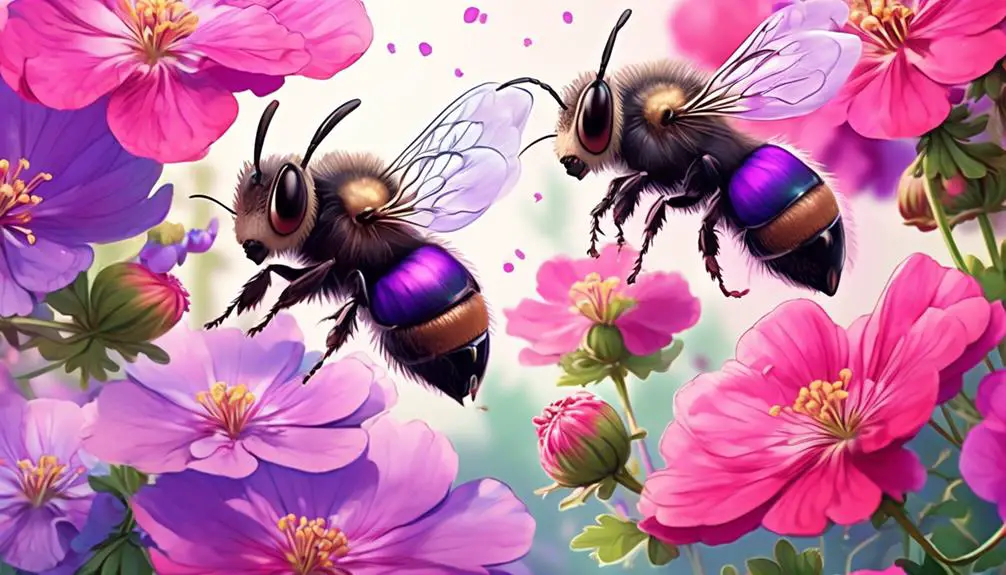
In exploring the harmonious dance of Geraniums and Mason Bees, it's vital to delve into the intricate details that shape this relationship, from the vibrant allure of the flowers to the bees' innate response to specific plant traits.
As a lover of geraniums, you might've noticed Mason Bees frequenting your garden. These bees aren't just there for the scenery; they're driven by the allure of these vibrant flowers.
Geraniums, with their bright hues and distinct fragrance, are irresistible to Mason Bees. The bees are drawn to the nectar-rich blossoms, which provide them with necessary nourishment. But it's not a one-sided relationship. The bees, in return, play a crucial role in the geranium's reproduction process by transferring pollen from the male anthers to the female stigma, facilitating cross-pollination.
The Mason Bees' preference for geraniums isn't accidental. These bees, instinctively, are attracted to bright colors, sweet fragrances, and plants rich in nectar and pollen. Your geraniums offer all of these, making them a Mason Bee favorite. Therefore, you'll notice an increase in the bee population around your geraniums.
This mutually beneficial relationship enhances the survival and propagation of both species.
Attracting Mason Bees With Geraniums
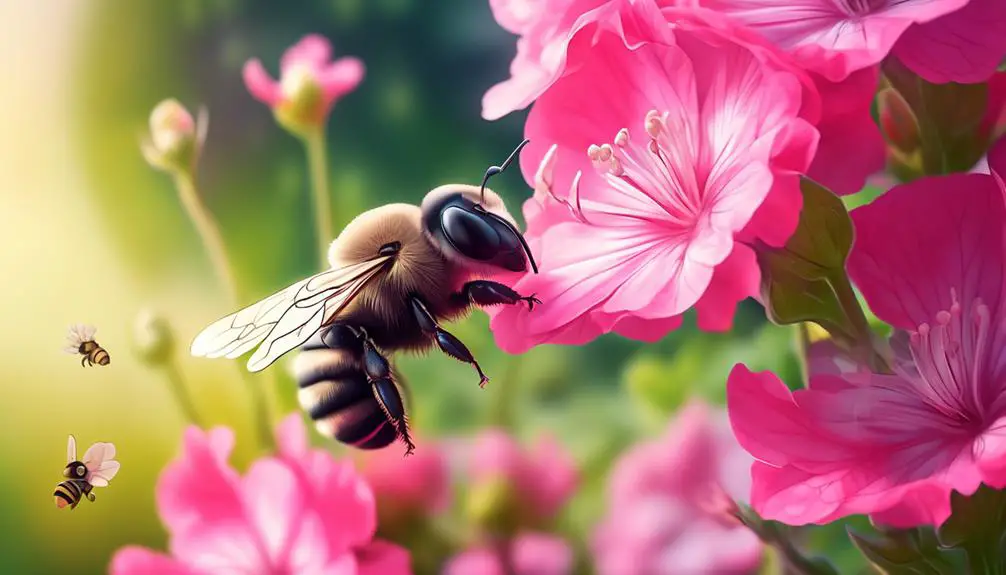
If you're looking to draw more Mason Bees to your garden, planting geraniums can be an effective strategy due to their shared symbiotic relationship. The vibrant flowers of geraniums are known to attract these industrious pollinators, and in turn, the bees aid in the plant's pollination process.
The key to attracting Mason Bees with geraniums lies in understanding their preferences. These bees are drawn to native plants, so selecting geranium species indigenous to your area can increase your chances of attracting them.
Consider the placement of your geraniums. Mason Bees are solitary creatures and prefer quiet, undisturbed areas. Planting in a secluded corner of your garden can create an inviting environment for these bees.
It's also crucial to remember that Mason Bees need more than just flowers for sustenance. They require a source of mud for nesting, so ensure there's a muddy patch nearby.
Lastly, avoid using pesticides on your geraniums. These chemicals can harm or even kill Mason Bees, negating the purpose of your efforts.
Conclusion
So, do mason bees like geraniums?
Absolutely! These busy pollinators are drawn to the vibrant colors and nectar-rich blossoms of geraniums. They're not just attracted to these flowers; they play a crucial role in their pollination.
By planting geraniums in your garden, you're not only adding beauty but also encouraging a healthier environment by attracting mason bees. It's a win-win situation for nature enthusiasts and these hardworking bees!

